
Saw Law Eh
There are an estimated 610,000 people living in conditions of modern slavery in Thailand (GSI 2018). Thailand is a source, destination, and transit country for men, women, and children subjected to forced labour and sex trafficking. Labour trafficking victims are exploited in commercial fishing and related industries, the poultry industry, manufacturing, agriculture, and domestic work, or forced into street begging. Men, women and children are victims of human trafficking for forced labour in the Thai fishing industry, subjected to physical abuse, excessive and inhumane working hours, sleep and food deprivation, forced use of methamphetamines and long trips at sea confined to the vessel. Due to the fishing industry relying on trans-shipments at sea to reduce expenditure, some find themselves trapped on long-haul trawlers for years at a time. This makes the monitoring of enslaves labour on fishing vessels costly and difficult. Saw Law Eh is one of an estimated 150,000 people who have fled Burma’s civil war and now live in one of nine camps along the Thai border.
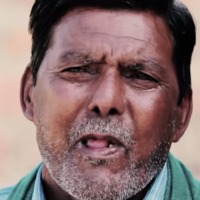
Babu Shah
Entire families migrate every year from other states in India to find work in Punjab’s brick kilns. The survey data suggest that there are more than 18 million people or 1.4 percent of the total population, who are living in conditions of modern slavery in India. Industries implicated in survey data include domestic work, the construction and sex industries, agriculture, fishing, manufacturing, manual labour, and forced begging. Most of India’s slavery problem is internal, and those from the most disadvantaged social strata—lowest caste Dalits, members of tribal communities, religious minorities, and women and girls from excluded groups—are most vulnerable.Babu Shah and his family were trapped in bonded labour in a brick kiln.
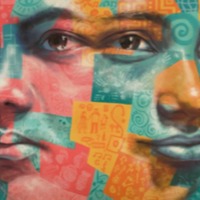
Daria
Despite having the lowest regional prevalence of modern slavery in the world, Europe remains a destination, and to a lesser extent, a source region for the exploitation of men, women and children in forced labour and commercial sexual exploitation. According to the most recent Eurostat findings, European Union (EU) citizens account for 65 percent of identified trafficked victims within Europe. These individuals mostly originate from Eastern Europe, including Romania, Bulgaria, Lithuania and Slovakia. In Albania and Bosnia and Herzegovina, the European Parliament has identified corruption and the judicial system as reform challenges towards accession talks within the EU. In Greece, the turbulent economic situation has increased vulnerability for populations seeking employment and livelihood opportunities. In Greece, unemployment reached 24.4 percent in January 2016 with a youth unemployment rate of 51.9 percent. Daria describes multiple instances in which she was exploited or enslaved as a child, and the failure of the police to stop the situation.
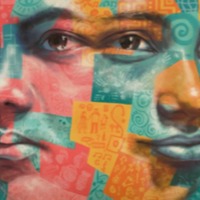
Amaya
Cambodia was renowned as a sex tourism destination in the 1990s and this legacy is still prevalent today with women and girls trafficked within the thriving sex industry in Cambodia's major cities. Despite significant attempts to curb CSE, NGOs report the industry has been pushed underground and sex offenders are still able to purchase sex with children through an intermediary rather than more overt selling of sex in brothels. Boys and young men are also vulnerable to sexual exploitation, with many entering the massage industry due to a lack of training and skills. Amaya’s story demonstrates that family problems and child abuse can lead to children turning to those who would sell or exploit them. After Amaya was rescued by the police she was referred to Hope for Justice and began her rehabilitation program. She worked through her trauma and began healing from the pain of her past. She began to discover a new dream for her future.
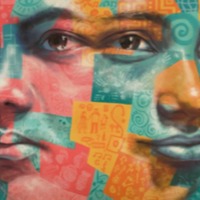
Tamara
Born in Armenia, Tamara was trafficked to the United Arab Emirates (UAE) where an estimated 10,000 women from sub-Saharan Africa, Eastern Europe, South and East Asia, Iraq, Iran, and Morocco are victims of sex trafficking. In addition, victims of child camel jockey trafficking still remain in the UAE: thousands of young boys have been trafficked from Pakistan, Bangladesh, Sudan, and Mauritania to work as camel jockeys, and though the UAE enacted a law banning the practice in July 2005, questions persist as to the effectiveness of the ban.
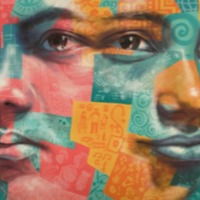
Nu
Of the estimated 600,000 to 800,000 individuals trafficked across international borders each year, some 80 percent are women and girls. Nu was one of the thousands of women trafficked annually out of Thailand for sexual exploitation. The major destinations include Japan, Malaysia, Bahrain, Australia, Singapore, and the US. Internal trafficking occurs within the country as well, usually from northern Thailand (where hill tribe women and girls are denied Thai citizenship). In Japan, where she was enslaved, women are trafficked from Thailand, the Philippines, Russia, and Eastern Europe, and on a smaller scale from Colombia, Brazil, Mexico, Burma, and Indonesia. Nu was repeatedly raped by a relative and escaped to Bangkok at the age of 15 to work as a prostitute. She was tricked into leaving for Japan with the promise of waitress work. She spent ten months enslaved in a “karaoke bar” in Shinjuku, a Tokyo district, and another four years working as a prostitute after her escape. Her narrative describes the involvement of other women in the process of enslavement: a hairdresser friend and the “mama-san” (brothel manager). The percentage of female traffickers is rising. Some have been trafficked themselves and then reappear as recruiters or pimps. Others are blackmailed by criminals. Female traffickers are often the most convincing at deceiving women and girls into accepting fake job offers and so beginning the journey into slavery.